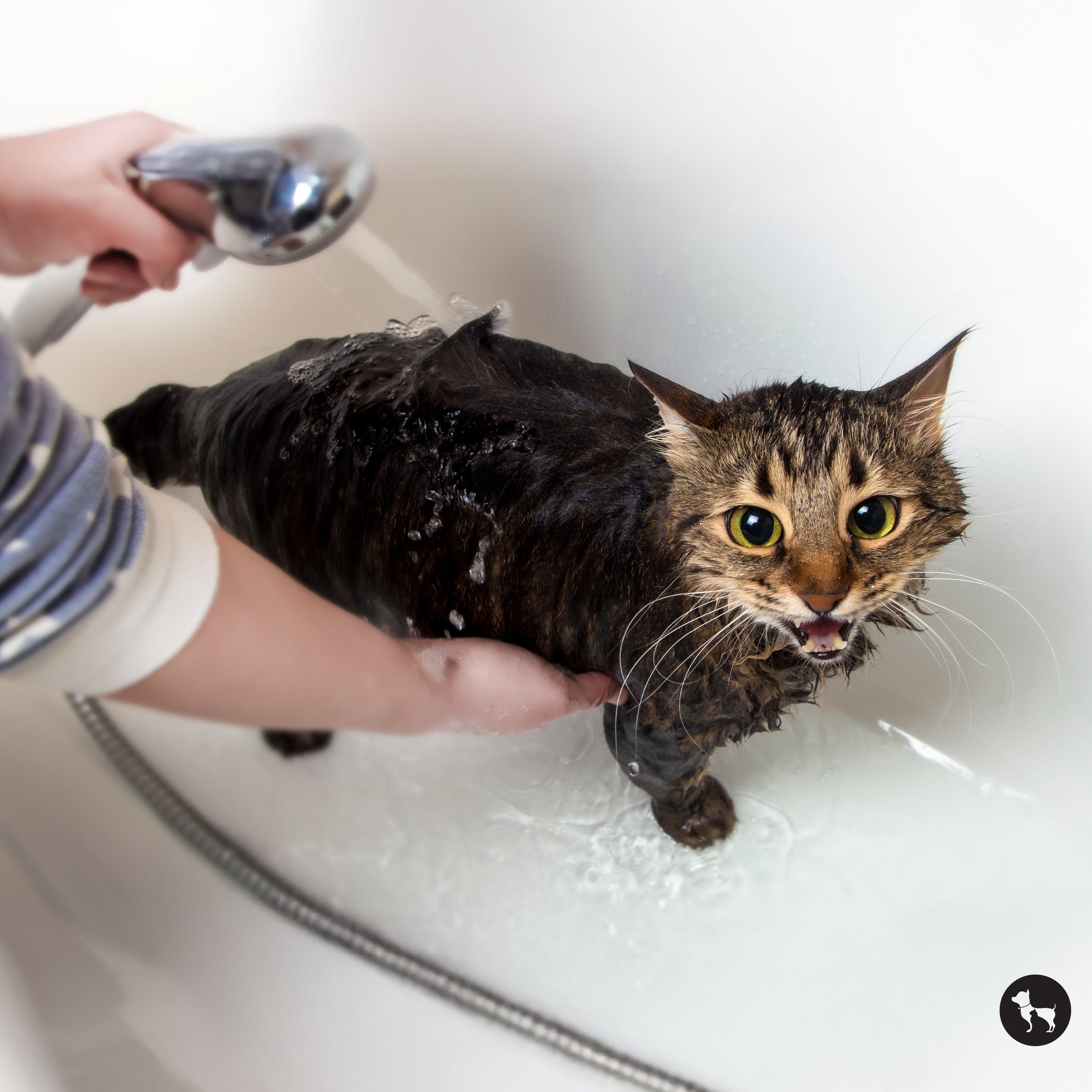
If you have ever tried bathing your cat, you've probably ended up with a soaking-wet bathroom and a very unhappy feline. But why do cats hate water so much? It is a mystery that has puzzled cat parents for ages. While some cats are oddly fascinated by dripping taps, the sight of a full bathtub can send them running for cover.
The answer lies in their history, instincts, and even their fur. Unlike dogs, most cats were not built for swimming, and their thick coats can become heavy and uncomfortable when wet. Plus, they are all about staying in control, and water just does not play by their rules!
But bath time is a must, and there are ways to make it less stressful. With the right approach, you can help your cat feel a little more at ease around water. Let’s explore and uncover the reasons behind their fear and what you can do about it.

Cats and water don’t always get along, leaving many pet parents wondering why do cats hate water so much. While some may tolerate a few splashes, most felines will do everything they can to avoid getting drenched. Here are five possible reasons behind their aversion.
A cat’s coat is not designed to repel water like that of some other animals. Instead, their fur quickly soaks up moisture, making them feel heavy and uncomfortable. Wet fur takes a long time to dry, leaving them cold and vulnerable, which can be distressing for them. Since cats rely on agility and speed, anything that slows them down is naturally unwelcome.
Feline ancestors evolved in arid regions where large bodies of water were scarce. Whereas dogs, who often have a history of working in water, domestic cats never needed to develop a fondness for it. Their instincts still align with their evolutionary past, making them wary of something that was never a regular part of their environment.
Cats are meticulous groomers, and their tongues do an excellent job of keeping their fur clean and well-maintained. When they get wet, the natural oils in their coat can be stripped away, making it harder for them to regulate their scent and texture. This can leave them feeling out of sorts, which is why they often run off to groom excessively after even the smallest splash.
If a cat has ever been accidentally splashed, forced into a bath, or caught in the rain, they may associate water with stress or discomfort. Unlike dogs, who may shake off bad experiences, cats tend to remember and avoid situations that previously caused them distress. One bad encounter with water can lead to a lifelong dislike.
Cats are highly sensitive to their surroundings, including temperature changes. Water that is too cold or too warm can feel weird to their skin, making them instinctively avoid it. Since they spend so much time maintaining their body temperature, stepping into water that disrupts their comfort is something they naturally resist.

While most cats prefer to keep their paws dry, some breeds actually enjoy water and won’t shy away from a good splash. Maine Coons, with their thick, water-resistant coats, have no problem getting wet and may even play with running taps. Their history as shipboard pest controllers could explain why they are so at ease around water.
Similarly, the Abyssinian cat is known for its adventurous spirit and curiosity, often dipping its paws into water bowls or exploring full bathtubs without hesitation. With their origins tracing back to a sea voyage to Europe, their comfort with water may be ingrained in their nature.
While water aversion is common in felines, these breeds prove that not all cats are afraid of getting their fur wet.
Helping your cat feel at ease around water starts with gradual exposure and positive reinforcement. Instead of forcing them into a bath, let them interact with water in a way that feels safe. A slow-dripping tap or a shallow dish can spark their curiosity, making water seem less intimidating. Gently wiping their fur with a damp cloth can also help them adjust without the stress of full immersion.
When bathing is necessary, ensure the water is lukewarm and keep the experience quick and calm. Speak softly, offer treats, and avoid getting their head wet to reduce discomfort. Over time, creating positive associations, like rewarding them after brief water contact, can help ease their anxiety and make grooming easier for both of you.